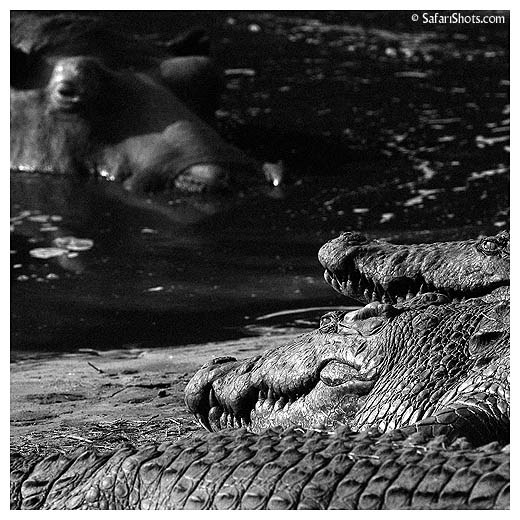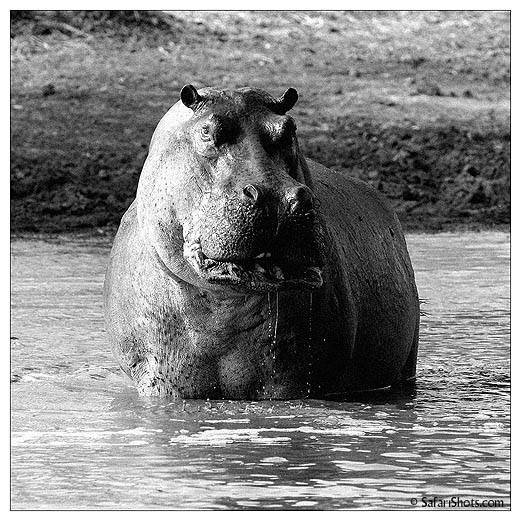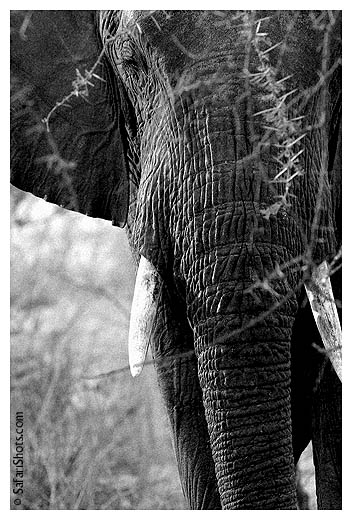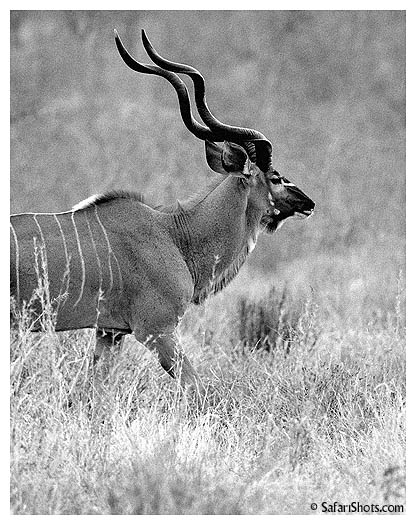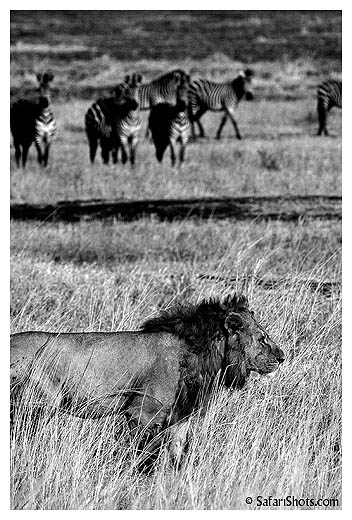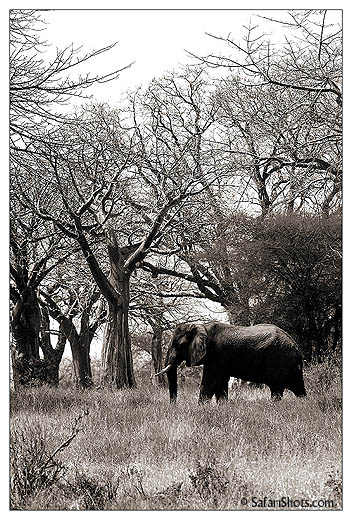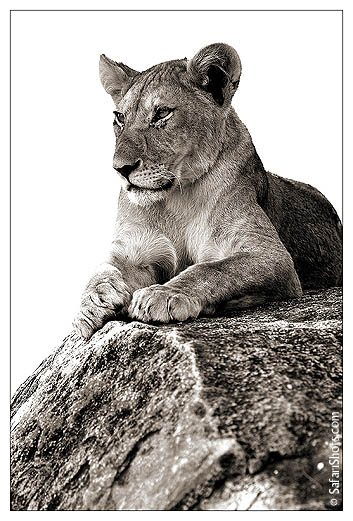|
|
|||||
|
Black and White for Wildlife Text and photos by Jon
Hill, August 2005 I've recently been experimenting with converting color digital wildlife images to black and white, sometimes with sepia-like toning. I really enjoy the way these images have depth and texture. Color has become the mainstay of wildlife photographers for the last few decades. Films like Fujichrome Velvia created many addicts to supersaturated color. The goal often seems to be to make nature look even better than it really is. Photographers often discuss the merits of photography in morning or evening light. Usually the reason for shooting at these times is the richness of color that is recorded in those hours of "magic light". So does that mean that before color photography people weren't as concerned about time of day? Assuredly not. There are other very important reasons to shoot with a low sun angle that have nothing to do with color. I'd like to explore two related reasons. First, a low angle means that the shadows are cast horizontally rather than vertically. This means that vertical features will have dark and light sides to them. This shading often helps create the illusion of 3-D in our 2-D medium. Our brains interpret light and dark shading and immediately register 3-D shapes. Sometimes our brains do this wrong. I recently took a photo of my own footprints on a beach in morning light. Each footprint was lit up on the side opposite the sun and shaded on the side nearer the sun. This is, of course, because footprints are depressions.
However, about half of the people who saw the photo interpretted the shading with the light source on the opposite side. They saw shadows being cast by foot-shaped mounds of sand. Some even asked, how did you get the footprints to raise up like that?" The problem was that there was nothing else casting a clear shadow in the photo to correct their unconscious decision about where the sun was. The fact that morning and evening light cast deeper shadows helps to convey another important photographic idea, texture. Black and white photography particularly emphasizes texture because there is no color to distract the viewer's attention from the small shadows that make it apparent. Animals have interesting textures. Fur, feathers, and scales can seem more touchable in black and white. The photos below work, in my opinion, because they convey a sense of 3D-ness and texture. Giving a black and white photo a touch of sepia (as in the last two photos) makes a photo warmer, and perhaps gives it a more natural feeling. All photos taken with Nikon D2X.
|
|||||
|
|
|||||
|
All images in this site are copyrighted. Do not copy or use without permission. |
|||||


